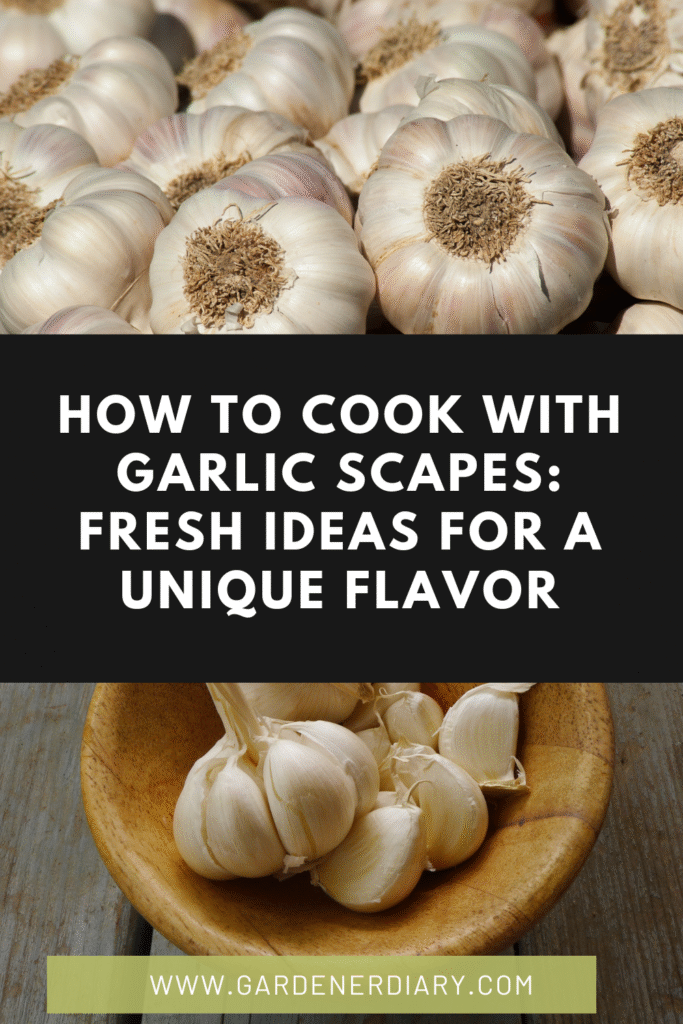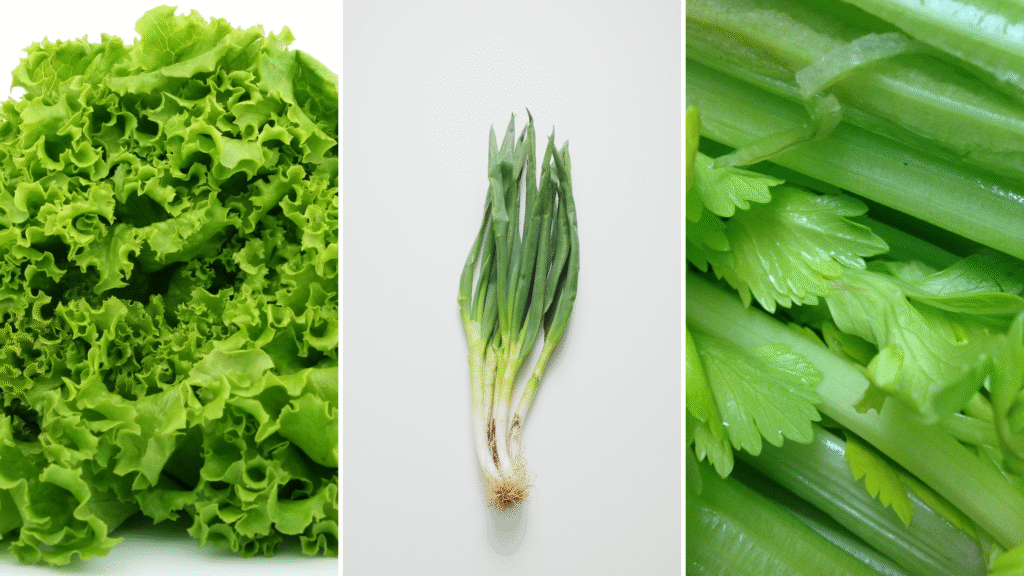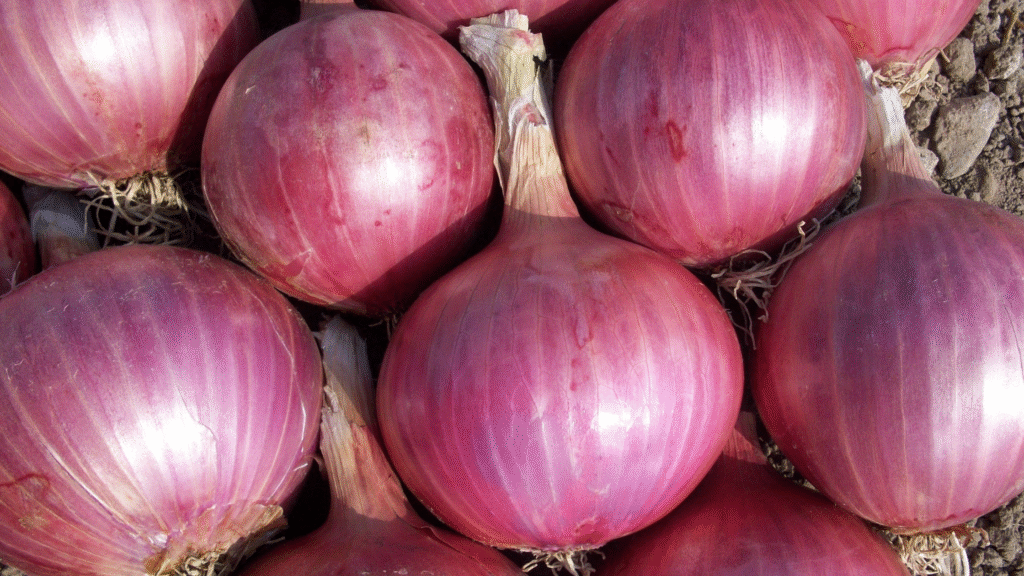Garlic scapes are the curly green shoots that appear on garlic plants in late spring or early summer. They grow from the bulb and eventually form flowers if left unharvested. Farmers and gardeners trim them to encourage the garlic bulb to grow larger. Instead of discarding them, many people now recognize scapes as a flavorful ingredient.
Their flavor is milder than garlic cloves but still distinct. Think of them as a mix between garlic and green onion, with a slight crunch. Cooking with garlic scapes can add a fresh, seasonal twist to your meals. They are also a good source of vitamins, minerals, and antioxidants (garlic scape health research).
If you enjoy garlic toast or the flavor of garlic paste in recipes, garlic scapes will feel like a natural addition to your kitchen.
What Are Garlic Scapes?
Garlic scapes are part of the hardneck garlic variety. They grow from the center of the bulb and form long, slender, curly stalks. They are typically harvested in early summer, before they become too fibrous.
Fresh scapes are bright green, smooth, and flexible. Older scapes can become tough, so it’s best to use young ones for cooking. They can be eaten raw, cooked, or preserved for later use.
Fun fact: Garlic scapes are common in cuisines across Asia and Europe. In China, they are stir-fried with meats and seafood. In Eastern Europe, they are pickled or blended into spreads.
Nutritional Benefits of Garlic Scapes
Garlic scapes contain many of the same beneficial compounds as garlic bulbs. These include:
- Allicin – a natural compound with antibacterial and anti-inflammatory properties (study on garlic compounds).
- Antioxidants – help reduce oxidative stress in the body.
- Vitamin C – supports immune health.
- Minerals – such as manganese and calcium for bone health.
Some studies suggest garlic scapes may also help with cardiovascular health and blood sugar regulation (garlic scape nutrition research).
How to Choose Garlic Scapes
When buying or harvesting garlic scapes:
- Look for smooth, bright green stalks.
- Avoid yellow, wilted, or overly woody scapes.
- Choose smaller, tender scapes for the best texture and flavor.
If you grow garlic yourself, you can cut scapes when they make one to two full curls. This is the point where they are most tender.
How to Store Garlic Scapes
- Refrigeration: Place unwashed scapes in a plastic bag or container. They can last up to 2 weeks in the fridge.
- Freezing: Chop scapes and store them in airtight bags for use in soups, stir-fries, and sauces later.
- Pickling: Keep scapes in vinegar brine for a tangy snack or garnish.
- Drying: Dehydrate chopped scapes to make a garlic-flavored seasoning powder.
If you already know how to freeze garlic, you can follow a similar process for scapes.
Cooking Methods for Garlic Scapes
Garlic scapes are versatile and can be used in many ways. You can cook them lightly to preserve their bright flavor, or roast them for a sweeter taste.
1. Sautéing
Sautéed garlic scapes are quick and delicious.
Steps:
- Chop scapes into 1–2 inch pieces.
- Heat olive oil in a pan over medium heat.
- Add scapes and a pinch of salt.
- Cook for 3–5 minutes until tender.
You can serve them as a side dish, add them to scrambled eggs, or mix them into pasta with garlic sauce for pasta.
For inspiration, check out 10 best garlic scape recipes.
2. Grilling
Grilled garlic scapes have a smoky, slightly sweet flavor.
Steps:
- Keep scapes whole.
- Brush with olive oil.
- Season with salt and pepper.
- Grill over medium heat for 2–3 minutes per side.
They pair beautifully with grilled meats, especially when served with garlic sauce for steak or garlic sauce for chicken.
3. Pesto
Garlic scape pesto is a fresh twist on the classic basil version.
Steps:
- Blend raw scapes with olive oil, Parmesan, nuts, lemon juice, and salt.
- Adjust to taste with more oil or cheese.
Spread this pesto on bread, toss with pasta, or use as a dip. You can also explore other creative uses in garlic scape cooking ideas.
4. Stir-Frying
Garlic scapes are perfect for stir-fries because they cook quickly.
Steps:
- Slice scapes thinly.
- Add to a hot wok with oil and protein such as shrimp, beef, or tofu.
- Stir-fry for 2–3 minutes.
They pair especially well with garlic sauce for prawns for an aromatic seafood dish.
5. Roasting
Roasting gives scapes a rich, mellow flavor, similar to roasted garlic cloves.
Steps:
- Toss scapes with olive oil, salt, and pepper.
- Spread on a baking sheet.
- Roast at 400°F (200°C) for 10–12 minutes, flipping halfway.
Serve roasted scapes alongside grilled vegetables or meats.
6. Adding to Soups and Stews
Chopped scapes can be added to soups, stews, or curries for extra flavor. Add them toward the end of cooking to preserve their texture and color.
7. Baking in Bread or Savory Pastries
You can knead chopped scapes into bread dough for a fragrant loaf. They also work well in savory pastries, paired with cheese and herbs.
Preserving Garlic Scapes for Year-Round Use
Like garlic bulbs, scapes can be preserved for months.
- Freezing: Chop and freeze for quick use.
- Pickling: Great for sandwiches and charcuterie boards.
- Fermenting: Produces a tangy, probiotic-rich condiment.
If you enjoy making garlic confit, you can adapt the same slow-cooking method for scapes in olive oil.
Recipe Ideas Using Garlic Scapes
- Garlic Scape and Potato Soup – Blend sautéed scapes with potatoes and cream.
- Garlic Scape Omelette – Add chopped scapes to beaten eggs and cook until fluffy.
- Garlic Scape Pizza – Use pesto as a base sauce and top with fresh vegetables.
- Garlic Scape Hummus – Blend scapes with chickpeas, tahini, and lemon juice.
- Garlic Scape Pasta – Toss sautéed scapes with spaghetti and Parmesan.
For even more ideas, try adapting dishes like garlic bread or garlic toast using scape pesto instead of minced garlic.
Cultural Uses of Garlic Scapes
In Korea, garlic scapes (maneuljjong) are often stir-fried with soy sauce and sesame oil. In Russia, they are pickled and served as a condiment. In Canada and the U.S., farmers’ markets sell them fresh for seasonal cooking.
These diverse uses highlight their versatility. Whether you prefer bold flavors or subtle accents, garlic scapes can adapt to many cuisines.
Health Research on Garlic Scapes
Garlic scapes share health properties with garlic bulbs, including antioxidant activity, anti-inflammatory effects, and potential cardiovascular benefits (scientific review). Their milder taste makes them more approachable for those who find raw garlic too strong.
Research also suggests garlic plants may have protective effects against certain chronic diseases (open access study).


